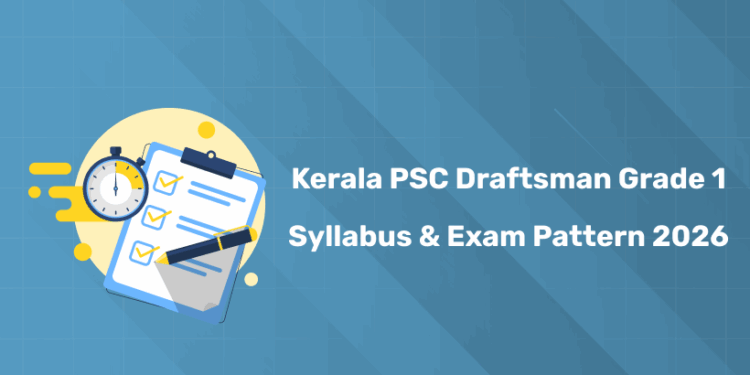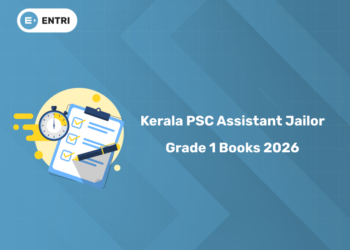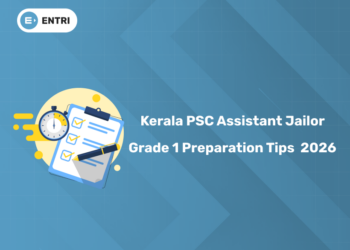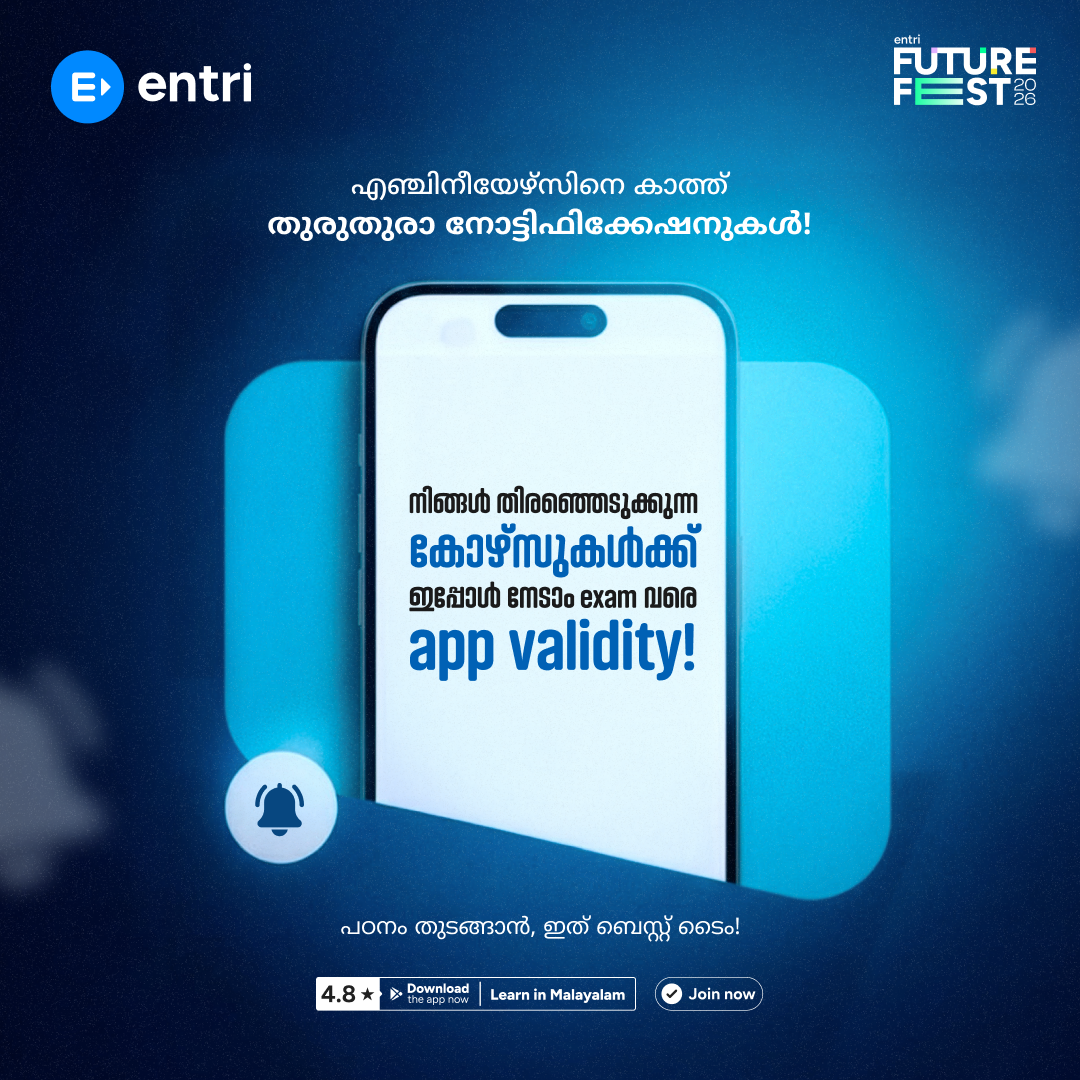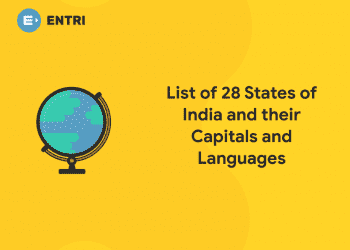Table of Contents
The Kerala PSC Draftsman Grade 1 recruitment 2026 has been officially released, and the exam is expected to be conducted soon. Though the exact date is not yet announced, aspirants can start preparing early. In this blog, we’ve attached the latest Kerala PSC Draftsman Grade 1 syllabus and exam pattern to help you plan your preparation process. Download PDF now!
Kerala PSC Draftsman Grade 1 Exam 2026 Highlights
| Name | Event |
| Conducted By | Kerala PSC |
| Name of Organization | Notify Later |
| Name of Post | Draftsman Grade 1 (Civil) |
| Category Number | To be Notified |
| Method of Appointment | Direct Recruitment |
| Scale Of Pay | As per Notification |
| Number of Vacancies | Anticipated Vacancies |
| Mode of Exam | Offline |
| Exam Date | Notify Later |
| Admit Card | Notify Later |
| Official website | www.keralapsc.gov.in |
Kerala PSC Draftsman Grade 1 Syllabus 2026 PDF Download
1: Between the period of 1858-1947, how many Viceroys ruled over India?
Candidates preparing for the upcoming Kerala PSC Draftsman Grade 1 Exam 2025 can now download the complete and updated syllabus PDF from the link below. The syllabus covers all major topics, including Construction Materials, Concrete Technology, Structural Design, Quantity Surveying, and Construction Management. Download the official syllabus PDF and start your preparation today.
Prepare for Kerala PSC Technical Exams with Entri
സർക്കാർ ജോലി എന്ന സ്വപ്നം ഇനി സ്വപ്നം മാത്രമല്ല! Join Kerala's Top-rated PSC Coaching Programs
Join NowKerala PSC Draftsman Grade 1 PYQs 2026
| Question Paper Code | Download PDF |
|---|---|
| QP-73/23 | |
| QP-124/23 | |
| QP-71/2025 | |
| QN-105/2022 | |
| QP-114/23 | |
| QP-101/21 |
Kerala PSC Draftsman Grade 1 Exam Pattern 2026
The Kerala PSC Draftsman Grade 1 Exam 2026 will be conducted in English medium and will consist of a total of 100 objective-type multiple choice questions (MCQs). Each question carries 1 mark, making the exam worth 100 marks in total. The duration of the test is 1 hour 30 minutes (90 minutes). Candidates should note that there will be a negative marking of 0.33 marks for every wrong answer, so accuracy is crucial while attempting the questions.
Kerala PSC Draftsman Grade 1 Detailed Syllabus 2026
Candidates can go through the detailed Kerala PSC Draftsman Grade I syllabus below to understand the complete topic-wise coverage for each module.
SURVEYING
Purpose of surveying – types of survey – Levelling – Principle of levelling – parts and functions of dumpy level and telescopic leveling staff – steps involved in performing the temporary adjustments of leveling instrument – record observations in field book – compute the reduced levels of stations from field book – Classifications of levelling – steps involved in classification of levelling – principle of contouring – contour plans from given field notes.
Theodolite traversing – Principles of theodolite traversing – their parts and function – temporary adjustments and terms – fundamental lines and their relationship – horizontal angle measurement by repetition and reiteration method – steps involved in setting out angles using a theodolite – method of conducting traverse survey in the field using the theodolite – compute the co-ordinates – principle of trigonometry for determining the elevation of stations – vertical angle measurements – principle of trigonometric levelling – compute the elevations using trigonometric levelling.
CURVES – different types – elements of a simple curve – designation of a curve – setting out simple curves by offset method – from long chord, long tangents, chord produced – description of transition curves – requirement of transition curves – length of transition curves for roads – introduction to vertical curves – geometrics of a vertical curve.
Modern surveying equipments – TOTAL STATIONS, GPS AND GIS, Electronic Theodolites – Total stations – component parts – set up – working principles – maintenance of EDM instruments – temporary adjustments – measurement with total station, traverse with total station, survey station description – data gathering components – data processing components – error sources and controlling errors – field coding – field controlling – Modem for data transfer – readings with prism mode and non prism mode.
Remote sensing – Introduction and applications in Civil Engineering. Global positioning system (GPS) – fundamentals, GPS receivers, GPS observations, transformation of GPS results. Geographical information systems (GIS) – map definitions, map projections, data entry, importance, use and application of GIS in Civil Engineering. Introduction to Photogrammetry, aerial, terrestrial, applications of photogrammetry. (Marks – 8)
BUILDING PLANNING AND DRAWING
Building drawing – Conventional signs for construction materials – Building rules and Bye laws – Provision of safety for buildings, plinth area – floor area – carpet area – floor area ratio – coverage of building – height of building – building line – set back line – head room – mezzanine floor – basement floor – detached building – row houses.
Classification of Buildings and Planning requirements of building as per National Building Code / KMBR / KPBR. Plumbing layout showing water supply and sanitary fixtures of a residential building – electrical layout showing electrical fixtures and control points. (Marks – 5)
CONSTRUCTION MATERIALS AND ENGINEERING
Broad classification of materials – Natural, Artificial, Special, Finished and Recycled.
Requirements of good building stone – general characteristics of stone – Laterite boards, sizes and uses – Paints – whitewash, cement paint, distempers, oil paints and varnishes with their uses (situations where used) – Industrial waste materials – Fly ash, Blast furnace slag – Agro waste materials – Rice husk, Bagasse, coir fibers and their uses – Special processed construction materials – Ferro Crete, Artificial timber, MDF, HDF, PVC foam board, WPC, ACP, Artificial sand (M sand) and their uses – Structural steel sections for buildings.
Types of constructions – Load bearing wall structure, Framed structure, Composite structure, Prefabricated structures, Special framed structure for earthquake resistance (IS 13920) – Construction methods for structural steel buildings.
Building components – Functions of building components – Substructure – Foundation – Plinth – DPC – Superstructure – Parts of building – Walls, Partition wall, and Cavity wall, Sill, Lintel, Doors and Windows, Floor etc.
Construction of substructure – Job layout – Site clearance, Layout for Load Bearing Structure and Framed Structure by Center Line and Face Line Method.
Earthwork: Excavation for foundation – Timbering and stones quarrying and dressing of stone – Structure of timber, general properties and uses of good timber – different methods of seasoning for preservation of timber – defects in timber – use of bamboo in construction.
Lime – Properties, types and uses – Types of soil and its suitability in construction. Constituents of brick earth – Manufacturing process of burnt clay brick, fly ash bricks, Autoclave Aerated Concrete (AAC) blocks – Conventional / Traditional bricks – Modular and Standard bricks, Special bricks – fly ash bricks, Characteristics of good brick, Field tests on bricks – Classification of burnt clay bricks and their suitability.
Flooring materials: Types, uses (Natural and Artificial) – Granite, Marble, Clay tiles, Ceramic tiles etc. Pavement blocks and their uses.
Wood products: Plywood, particle board, veneers, laminated board and their uses.
Types of glass: Soda lime glass, Lead glass, Toughened glass and Borosilicate glass and their uses.
Ferrous and non-ferrous metals and their uses – Types of material and suitability in construction works of following materials – Waterproofing, Termite proofing, Thermal and sound insulating materials – Constituents and uses of POP (Plaster of Paris), POP finishing boards, sizes and uses – Paints – whitewash, cement paint, distempers, oil paints and varnishes with their uses (situations where used) – Industrial waste materials – Fly ash, Blast furnace slag – Agro waste materials – Rice husk, Bagasse, coir fibers and their uses – Special processed construction materials – Ferro Crete, Artificial timber, MDF, HDF, PVC foam board, WPC, ACP, Artificial sand (M sand) and their uses – Structural steel sections for buildings.
Types of constructions – Load bearing wall structure, Framed structure, Composite structure, Prefabricated structures, Special framed structure for earthquake resistance (IS 13920) – Construction methods for structural steel buildings.
Building components – Functions of building components – Substructure – Foundation – Plinth – DPC – Superstructure – Parts of building – Walls, Partition wall, and Cavity wall, Sill, Lintel, Doors and Windows, Floor etc.
Construction of substructure – Job layout – Site clearance, Layout for Load Bearing Structure and Framed Structure by Center Line and Face Line Method.
Earthwork: Excavation for foundation – Timbering and Strutting – Materials used for plinth filling – Foundation – Functions of foundation – Types of foundation – Shallow foundation and Deep foundation – Stepped footing, Wall footing, Column footing, Isolated and Combined column footing, Raft foundation, Grillage foundation, Strap footing, Pile foundation, Well foundation and Caissons.
Types of stone masonry – Rubble masonry, Ashlar masonry – Pointing of stone masonry and their purpose – Precautions.
Brick masonry – Terms used in brick masonry – Bonds in brick masonry – Header bond, Stretcher bond, English bond, Flemish bond etc. Requirements of brick masonry – Precautions to be observed – Hollow and Solid concrete block masonry – Composite masonry – Interlock bricks.
Scaffolding and Shoring – Purpose and Types – Underpinning – Formwork.
Doors – Fully paneled doors, Partly paneled and glazed doors, Flush doors, Collapsible doors, Rolling shutters, Revolving doors, Glazed doors.
Windows – Fully paneled, Partly paneled and glazed, Wooden, Steel, Aluminium windows, Sliding windows, Louvered window, Bay window, Corner window, Gable and Dormer window, Skylight – Sizes of windows recommended by BIS.
Ventilators – Fixtures and fastenings for doors and windows.
Vertical communication methods – Stair, Lifts and Escalators.
Roofs – Roofing materials – RCC, Mangalore pattern tiles, Ceramic roofing tiles, Thatched, G.I. sheets, Corrugated G.I. sheets, Plastic and Fiber sheets, Innovative roofing materials (Fiber reinforced cement board, Shingles etc.) – Types of roof – Flat roof, Pitched roof – Terms used in roofs – King Post Truss, Queen Post Truss – Terms used.
(Marks – 10)
CONCRETE TECHNOLOGY
Ingredients of cement, Manufacturing of cement – dry process, wet process, Hydration of cement, Types of cement, Physical properties of OPC & blended cement – fineness, standard consistency, setting time, soundness, compressive strength – Different grades of OPC and relevant BIS codes – Testing of cement: Laboratory tests – fineness, standard consistency, setting time, soundness, compressive strength – Storage of cement and effect of storage on properties of cement – BIS specifications and field applications of different types of cements: Rapid hardening, Low heat, Portland pozzolana, Sulphate resisting, Blast furnace slag, High alumina and White cement.
Aggregates: Requirements of good aggregate – Classification according to size and shape – Fine aggregates: Properties, size, specific gravity, bulk density, water absorption and bulking, fineness modulus and grading zone of sand – Silt content and their specification as per IS 383 – Concept of crushed sand. Coarse aggregates: Properties, size, shape, surface texture, water absorption, soundness, specific gravity and bulk density, fineness modulus of coarse aggregate – Grading of coarse aggregates – Crushing value, impact value and abrasion value of coarse aggregates with specifications.
Water: Quality of water, impurities in water and permissible limits for solids.
Properties of ingredients of concrete, Properties of fresh and hardened concrete. Concrete: Different grades of concrete, nominal and design mix, provisions of IS 456 – Duff Abrams’ water cement (w/c) ratio law – significance of w/c ratio – range of w/c ratio for different grades – maximum w/c ratio for different grades of concrete for different exposure conditions as per IS 456.
Workability – Factors affecting workability of concrete. Determination of workability of concrete by slump cone, compaction factor, Vee-Bee Consistometer – workability requirement for different types of concrete works – Segregation – bleeding and preventive measures – Properties of hardened concrete: Strength, Durability, Impermeability.
Concreting operations: Batching, Mixing, Transportation, Placing, Compaction, Curing and Finishing of concrete – Joints in concrete construction – Types of joints – Methods for joining old and new concrete – Materials used for filling joints.
Chemical admixtures, Special concrete and extreme weather concreting – Admixtures in concrete – Purpose, properties and application for different types of admixtures – Accelerating admixtures – Retarding admixtures – Water reducing admixtures – Air entraining admixtures and Super plasticizers.
Special concrete – Properties, advantages and limitation of different types of special concrete – Ready mix concrete – Fiber reinforced concrete – High performance concrete – Self-compacting concrete – Lightweight concrete – Geopolymer concrete – Mass concrete.
Cold weather concreting – Effect of cold weather on concrete – Precautions to be taken while concreting in cold weather condition – Hot weather concreting – Effect of hot weather on concrete – Precautions to be taken while concreting in hot weather condition – Underwater concreting – Concrete exposed to sea water.
Testing of concrete – Determination of compressive strength of concrete cubes at different ages – Non-destructive testing of concrete: Importance of NDT tests – Rebound hammer test – Working principle of rebound hammer – Factors affecting the rebound index – Ultrasonic pulse velocity test as per IS 13311 (Part 1 & 2) – Waterproofing: Importance and need of waterproofing – Methods of waterproofing – Materials used for waterproofing.
IRRIGATION ENGINEERING
Irrigation and its classification. Crop water requirement: Cropping seasons, Cropping calendar (Kerala), Crop period, Base period, Duty, Delta, Command area, Intensity of irrigation, Factors affecting duty.
Irrigation structures – Classification of head works – Storage and diversion head works – Their suitability under different conditions.
Storage headworks: Dams and its classification – Earthen dams and Gravity dams (Masonry concrete). Earthen dams and spillway – Components with function, typical cross section. Gravity dams – Typical cross section, drainage gallery. Spillways – Definition, function, location, Energy dissipaters.
Diversion head works – Layout, components and their function. Weirs – Components, parts, types. Barrages – Components and their functions. Difference between weir and barrage.
Canal regulators – Head regulator, Cross regulator, Escape, Falls and Outlets (brief description only).
Cross drainage works – Aqueduct, Siphon aqueduct, Super passage, Level crossing (brief description only). (Marks – 7)
STRUCTURAL DESIGN
The concept of limit state design, Partial safety factors in limit state method of design, Values of partial safety factors as per BIS, Principles of limit state design, Characteristic load & characteristic strength, Stress-strain curve of concrete and steel, Assumptions made in the limit state method of design, Depth of neutral axis, Lever arm – Moment of resistance.
Type of sections – Limiting value of NA and limiting moment of resistance. Design a singly reinforced rectangular simply supported beam and cantilever beams for different loading conditions for flexure (also using SP 16).
Design doubly reinforced rectangular beams under different loading conditions. Design of lintels under different loading conditions.
Design of flanged beams under different loading conditions, Check for stiffness as per IS 456-2000, Basic l/d ratio, Modification factor, Reduction factor for flanged beams, Check the deflection of singly reinforced, doubly reinforced and flanged beams, The shear and torsion behavior in RCC members, Nominal shear stress, Maximum shear stress in concrete, Permissible shear stress in concrete.
Design beams under different loading conditions for shear, bond and anchorage, Calculation of development length, Check for curtailment of bars in beams, Code provisions for lap length.
Study the behavior of slabs, Design of one-way slabs – simply supported, continuous, cantilever. Design of sunshade. Design of two-way slab – simply supported, restrained and different end conditions.
Design of staircases under different loading and end conditions – Dog legged and open well. Theory on design of columns – Behavior of short and long columns – Slenderness limit for columns as per IS code. Design the short column for direct load – Design the column for uniaxial bending using SP 16 – Study of slender columns.
Theory of column footing – Isolated and combined. Design of isolated column footing – Square and rectangular. (Marks – 6)
QUANTITY SURVEYING
Quantity surveying – Quantity surveyor – Duties of quantity surveyor – Essential requirements of quantity surveyor – Different types of estimates – Approximate estimate – Types of approximate estimate – Units of measurements for different items as per standard – Sundries – Lump sum – Lead and lift – Contingencies – Unforeseen items – Work charged establishment.
Capacity of reservoir from contour map. Different methods of taking out quantities, Method to compute quantities of a compound wall – Steps – Doors – Windows – Ventilator. Cost of materials at source and at site – Conveyance charges – Standard data book, Schedule of rates – Lump sum items – Extra labour – Contractor’s profit – Conveyance statement for different materials – Schedule of rates labour and materials – Analysis of rates – Preparation of standard data of CPWD with specification as per CPWD standard – Rules of measurements – Rules regarding tolerance of wastage of materials – General rules for taking measurements as per CPWD standard – Abstract of estimate – Preparation of abstract.
Detailed estimate of RCC beam, slab, column and preparation of bar bending schedule. Detailed estimate of aqueduct.
Detailed specifications for various items of work of earth work excavation, foundation concrete, masonry work, DPC, formwork, RCC, plastering, pointing, flooring, painting and polishing, IRC specifications for WBM road.
Preparation of plan, estimate and other documents for submission.
Valuation – Definition of valuation – Purpose – Factors governing valuation – Life of structure – Type, location, maintenance – Legal control – Scrap value – Salvage value – Market value – Book value – Sinking fund, annuity and depreciation. Methods of valuation: Rental method, Direct comparison with cost, Based on profit, Development method of valuation, Depreciation method. Calculation of depreciation by different methods. Land valuation. (Marks – 8)
CONSTRUCTION MANAGEMENT
Introduction to construction projects – Types of construction projects – Elements of construction project – Overview of construction industry – Importance of construction projects – Functions of construction management – Planning and its importance – Details to be collected during planning and preparation of detailed project report – Scheduling – Organizing – Directing – Controlling – Increasing productivity.
Different stages in construction project – Idea formulation – Investigation – Feasibility study/report – Project implementation – Types of estimate – Rough cost estimate and detailed estimate – Financial management – Cash flow – Budget – Seeking budget provision – Bills of appropriation – AS and TS.
Organizational structure of PWD/PSU – Duties and responsibilities of Overseer, AE, AEE, EE, SE and CE. Types of establishment – Regular or permanent establishment – Work charged establishment – CLR and NMR workers.
Project management tools – Bar chart – Network models – CPM – Project duration – EPO – LPO – ESTEFT – LST – LFT – Total float – Free float – Independent float – PERT – Calculation of expected time – Slack time – Comparison between Bar chart, CPM and PERT.
Project crashing – Information about project management software – Resource leveling and resource smoothening – Time cost trade off – Job layout – Modern housekeeping principles – Work study – Time and motion study.
Tender – Objectives of tendering – Tender notice – Details to be included in a tender notice – EMD – Tender documents – Types of tender – Procedure for opening tender – Tender tabulation – Firm period – Negotiations – Selection of contractor.
Contract – Conditions for validity of contract – Types of contract – Item rate contract – Percentage contract – Cost plus percentage contract – Lump sum contract – Piece work system – Departmental execution of works – Comparison of different types of contract – Execution of agreement – Conditions of agreement – Work order.
Quality control – Need and objectives of quality control – Role of specification, supervision, check lists, inspection and sampling & testing of materials in quality control.
Measurement of works – Rules for taking measurement – M-book – Rules for recording in M-book – Contractors’ acceptance of measurement – Arithmetic check – Preparation of bill – Types of bills – Part bill – Part & Final bill – Final bill – Recoveries from bill – Mode of payment – Hand receipt – Contractor’s ledger – Impress money.
Stores – Types of stores – T&P stores – Material stores – Material handling – Store management – VED – ABC principles – Shelf life of materials – Issue of materials from stores – Stock register – Intent – Invoice – USR – MAS – Minimizing wastage – Survey report & writing off unserviceable materials – Surplus stores & safe custody – Stock verification. (Marks – 6)
Prepare for Kerala PSC Technical Exams with Entri
സർക്കാർ ജോലി എന്ന സ്വപ്നം ഇനി സ്വപ്നം മാത്രമല്ല! Join Kerala's Top-rated PSC Coaching Programs
Join NowHow to Download Kerala PSC Draftsman Grade 1 Syllabus 2026
- Visit the official Kerala PSC website: https://www.keralapsc.gov.in
- Go to the “Downloads” section on the homepage menu.
- From the dropdown, click on “Syllabus”.
- You’ll see options to search by Category Number / Department / Post Name.
- In the search box, type “Draftsman Grade 1” (or the exact name of the post as given in your notification).
- Click the Search or Submit button.
- The PDF link for the syllabus will appear – click on it to open or download the file


